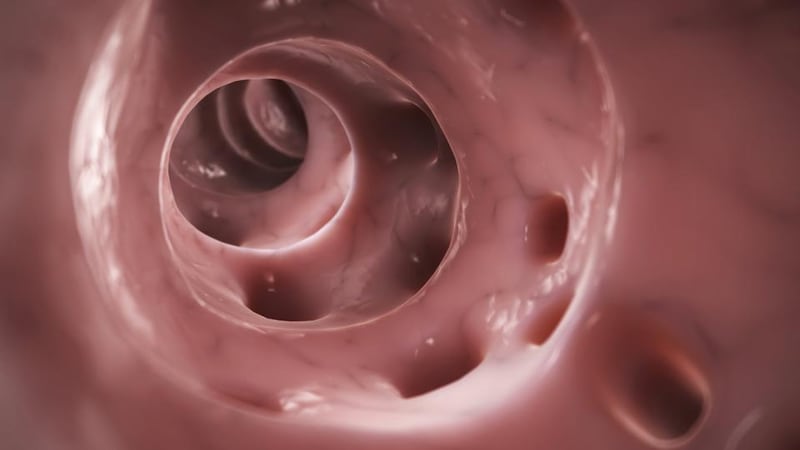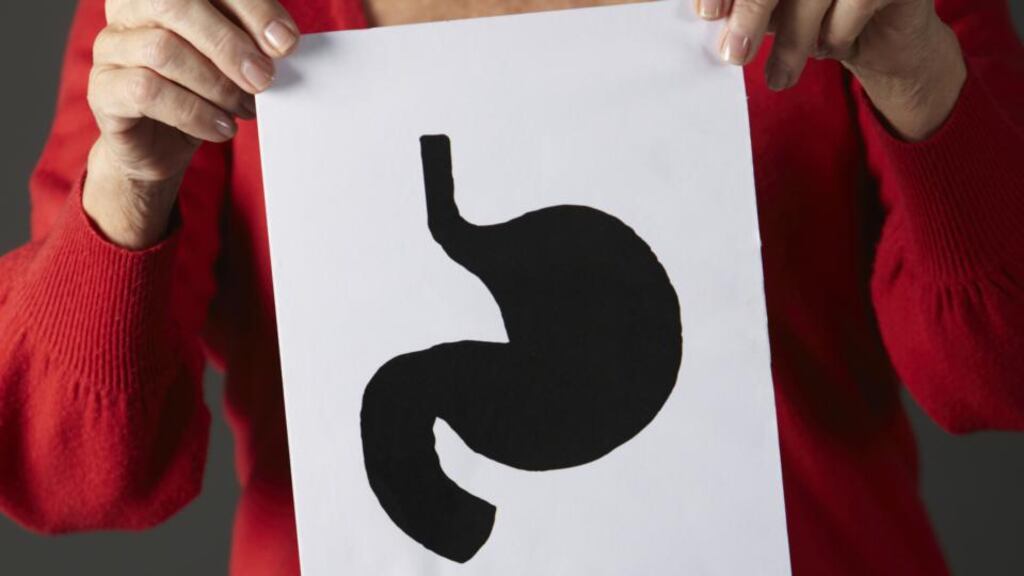As we age, our bodies slow down. The digestive system is affected by a number of small changes. For example, we produce less saliva. This, together with dental problems, can affect how well the food we eat is masticated and prepared for the stomach.
There may also be a decline in the production of stomach acid and pepsin. This can lead to a reduction in the amount of micronutrients we absorb, in particular vitamins B12 and folate.
Smooth muscle in the intestine contracts more slowly as we become less active. Consequently, food and waste move unhurriedly through the system, occasionally resulting in constipation and associated problems such as haemorrhoids or piles.

Similarly, diverticulosis is more common in later years. Estimates are that more than half of the population in their 70s and almost everyone over 80 has this condition.
It is characterised by small pouches that occur in the wall of the colon. These marble-sized pouches bulge outwards through weak areas of the wall. Pouches are most common just above the rectum. They occur over the years as a result of straining while passing bowel movements. The pouches are small at first but get larger with time.
But as these pouches seldom cause problems, you may not even know they are there. This is what is referred to as diverticulosis or the presence of bulging pouches, without symptoms.
Diverticular disease
Having symptoms such as cramps, bloating and irregular bowel movements, as well as the pouches, is referred to as diverticular disease.
Increasing the fibre content of meals can help keep the stools soft and easy to pass, which can prevent a buildup of pressure in the bowel. It is thought that preventing constipation and keeping the bowels regular may decrease the risk of more pouches developing and of possible infection.
A diet high in fibre can help here. Fibre is found naturally in the plants that we eat. It is a part of plants that does not break down in our stomachs; instead, it passes through our system undigested.
Fibre can be either soluble or insoluble. Both types are equally important for health.
Insoluble fibre contains cellulose, hemicellulose and lignin. It is considered the gut-healthy fibre, adding bulk to the waste and helping to prevent constipation. Insoluble fibre can be found in foods such as wholegrain breads, wholegrain cereals, wholewheat pasta, wholewheat flour, wheat bran, brown rice, oats, lentils, beans and pulses, fruits with edible seeds, nuts and seeds.
Soluble fibre can help lower cholesterol levels and control blood sugar. It can be found in all fruit and vegetables, beans and legumes and oats.
Eighty per cent of Irish adults don’t eat enough fibre. The guideline daily amount (GDA) of fibre is 24g. But rather than worrying about the types of fibre you eat, focus on improving the overall quality of your meals. When you eat regular meals containing wholegrain carbohydrates and plenty of fruit and vegetables, you usually get the fibre you need.
Look at the labels
Have a look at the food labels in your weekly shop. Check the label to ensure that you’re selecting foods with at least 3g of fibre per serving. As a general guideline; a “source of high fibre” foods contain at least 6g fibre per 100g; “a source of fibre” is at least 3g of fibre per 100g.
If you have either diverticulosis or diverticular disease, it is important you eat high-fibre meals and make sure to drink plenty of fluids, preferably water. In the past, foods such as nuts, seeds and popcorn were advised against in case they got lodged in the pouches.
However, there is no proven benefit in avoiding these foods in the management of diverticulosis or diverticular disease. In fact, a large prospective cohort study found that nuts and popcorn may protect against diverticular disease. They are certainly good sources of fibre.
Diverticulitis
When small hard pieces of stool get caught in the one or more pouches, they become inflamed or infected. This flare-up is diverticulitis. It can feel like appendicitis, except generally the pain is in the lower left side of the abdomen.
You may also have abdominal tenderness, fever, nausea, and constipation or diarrhoea. Infection can last up to a week, during which time the high-fibre diet is unhelpful.
Rather than eating high-fibre meals, your doctor or dietitian will give you a soft, low-fibre plan to follow. Puréed soups, mashed potato without the skin, well-cooked pasta and bananas are on the menu whereas onions, the skins of all fruits and vegetables, nuts, seeds, brown rice, nuts and seeds are not suitable during the flare-up. Lower fibre soft meals result in less undigested material passing through the colon, less stool bulk and less pressure in the colon.
The important thing to note is that once the infection clears up, you can go back to your high-fibre meals again.
Your doctor, nurse or dietitian can help you with specific and tailored advice for a healthy gut and to help you manage a diverticular disorder.
Paula Mee is a dietitian and a member of the Irish Nutrition and Dietetic Institute. See medfit.ie; @paula_mee
Sources of fibre: weighing it up
Swapping from white to wholegrain carbohydrates can boost your intake. 30g cornflakes0.9g 30g porridge oats2.5g 1 slice white bread0.7g 1 slice wholegrain bread2.7g 1 portion penne pasta2.3g 1 portion wholewheat pasta7.2g 1 portion white rice 0.6g One portion brown rice 2.0g
Diverticular disease and sources of fibre
Diverticulosis is the presence of bulging pouches but no symptoms. Diverticular disease is the presence of bulging pouches with symptoms. Diverticulitis is the presence of inflamed bulging pouches, fever or infection.
Good sources of fibre in fresh fruit (plus the amount of fibre that is found in typical portions) include:
Avocado pear: a medium-sized avocado pear contains 4.9g of fibre
Pear (with skin): a medium-sized pear contains 3.7g of fibre
Orange: a medium-sized orange has 2.7g of fibre
Apple (with skin): a medium-sized apple contains 2g of fibre
Raspberries: two handfuls of raspberries (80g) contain 2g of fibre
Banana: a medium-sized banana has 1.7g of fibre
Tomato juice: one small glass of tomato juice (200ml) has 1.2g of fibre
Good sources of fibre in vegetables (plus the amount of fibre found in typical portions) include:
Baked beans (in tomato sauce): half a can of baked beans (200g) has 7.4g of fibre
Red kidney beans (boiled): three tablespoons of red kidney beans contain 5.4g of fibre
Peas (boiled): three heaped tablespoons of peas contain 3.6g of fibre
French beans (boiled): four heaped tablespoons of French beans contain 3.3g of fibre
Brussels sprouts (boiled): eight Brussels sprouts contain 2.5g of fibre
Potatoes (old, boiled): one medium-sized potato contains 2.4g of fibre
Spring greens (boiled): four heaped tablespoons of spring greens contain 2.1g of fibre
Carrots (boiled, sliced): three heaped tablespoons of carrots have 2g of fibre
Good sources of fibre in nuts (plus the amount of fibre found in typical portions) include:
Almonds: 20 almonds contain 2.4g of fibre
Peanuts (plain): a tablespoon of peanuts contains 1.6g of fibre
Mixed nuts: a tablespoon of mixed nuts has 1.5g of fibre
Brazil nuts: 10 Brazil nuts contain 1.4g of fibre
Source: nhs.uk










